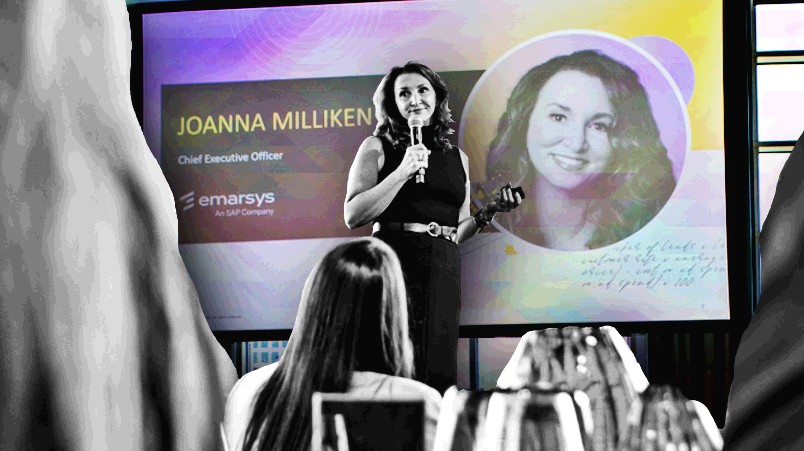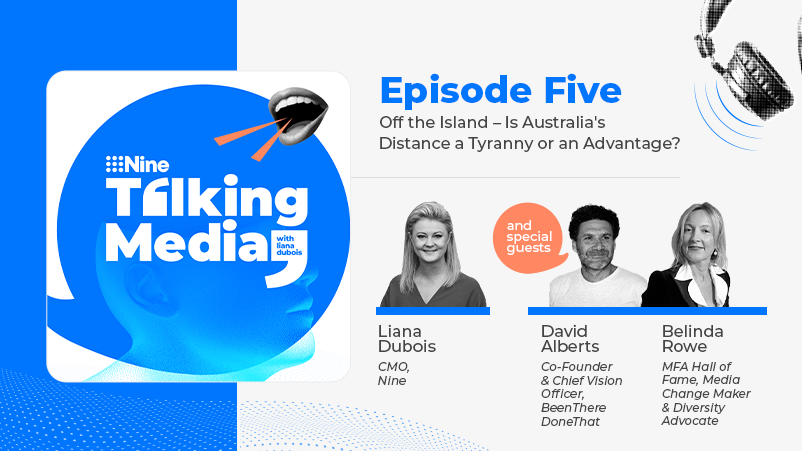Emarsys CEO on how email still wins despite decades of media-martech advances; why founders leaving post-acquisition enables innovation; how Adore Beauty and City Beach are smashing it

Pic: Joanna Milliken, Emarsys CEO: email's resilience should surprise no one
Emarsys CEO Joanna Milliken has worked in martech for 20 years, including stints at Exact Target and Salesforce. Now three years into her role running Emarsys, a job she landed one month before SAP bought the company, she has successfully integrated the business into the giant global software vendor – no mean feat in an industry where cultural clashes can derail acquisitions. Having a long-term perspective on the promise of martech to improve business outcomes helps. Milliken tells Mi3 about the most predictable outcomes in martech during her time in the industry and the most unexpected. She calls out two Australian businesses – Adore Beauty and City Beach – as standout examples of how to get customer and employee engagement right.
What you need to know:
- Despite all the predictions to the contrary, email marketing remains one of the most powerful tools in a brand's kit bag says Emarsys CEO Joanna Milliken who also says the rise of social media marketing was probably the most unexpected change during her time in the industry
- Milliken also pushes back on the idea – widely held and increasingly so by many marketers – that relative spending on martech versus marketing activity is out of balance. It's important to consider the customer experience effect and the impact on retention, she says.
- Milliken holds up Adore Beauty as standout example of a brand building deep customer connections, while City Beach does a great job aligning its people behind the mission.
- Emarsys's customer set now includes a majority of the kinds of enterprise accounts that are more typical of SAP than the world from where the company first emerged. That's a function of SAP's go-to-market strategy but also a reflection of successful cultural integration, made easier by the decision of the founders to leave after the acquisition was done.
- That's not been the case with all of SAP's acquisitions.
In terms of what surprised me personally that I didn't anticipate... you could anticipate that digital was here to stay, and e-commerce was here to stay, even a bit of mobile. But I did not anticipate the absolute explosion of social. When I started, it was MySpace, or whatever, so we had no idea. And then Facebook came [along] and there's all these channels now, so that channel explosion significantly changed things.
After 20 years in marketing technology, including a decade in senior roles at Exact Target and Salesforce during martech's Cambrian moment last decade, SAP Emarsys CEO Joanne Milliken is well placed to parse what we saw coming (or should have) and what was genuinely surprising.
She also says many brands are still a long way away from fulfilling the promise of end-to-end integrations.
However, she disputes the idea that the balance between spending on martech and spending on "actual marketing" is out of balance.
Mi3 interviewed Milliken at the company's recent Melbourne event and we began by asking the most predictable and the most unexpected trends during his two decades in martech.
"Everyone kept saying email is dead, yet it continues to persist. It's our primary key, It's just not gonna die. Data-driven decision making, all those sorts of things have persisted. The desire to be relevant – right content, right person, right time, that mantra, I've never heard anything different. And omnichannel personalisation. I think those things are very consistent."
"In terms of what surprised me personally that I didn't anticipate... you could anticipate that digital was here to stay, and e-commerce was here to stay, even a bit of mobile. But I did not anticipate the absolute explosion of social. When I started, it was MySpace, or whatever, so we had no idea. And then Facebook came [along] and there's all these channels now, so that channel explosion significantly changed things."
While change – predictable or otherwise has been constant throughout her career, first with Exact Target, then Salesforce, and now SAP, one challenge that has not yet been met completely is fulfilling the promise of end-to-end systems integration.
There is still a desire to be more integrated she says, along with a better understanding of why is so important that individual parts of any business cannot operate in silos and feel they can go it alone. "It's not like marketing can meet their goal or customer service can meet their goal, right?"
She also rejects the view that martech and campaign spend are out of balance. Analysis by firms like Gartner suggests that brands are spending as much on the underlying tech as they do on their campaigns. Marketers – including some of her own customers Mi3 spoke with at the Melbourne event tend to agree, but Milliken offers a contrary view.
Martech isn't just about the campaign, it's about customer experience as well.
"Is it out of balance? I don't think so. Because I think the marketing part of it is also about retention."
When it comes to local customers who she believes are doing a great job meeting both customer needs and expectations she calls out two in particular – Adore Beauty with whom SAP Emarsys has a ten-year ongoing relationship, and City Beach.
"Adore Beauty and how they approach their customers is just fantastic. They look at the customers as a whole person, they are not just a walking wallet. They understand there are dynamics happening around the person that's making decisions that are different than they would have had before. They have that empathy and understanding and it just shows that they're listening. They do everything in a connected way and when you interact with Adore or anybody in the organisation it's the same tone and tenor."
Life's a beach
The lesson from City Beach is that you have to effectively manage and lead your teams and help them understand the value they bring.
"What I like about what City Beach does – and I think people undervalue it – is it's so small. It's so simple. And what's important about that is that their employees understand it."
It's not always the case with other companies she suggests. "I think that's a big miss at times."
The one thing that is consistent is that no matter what you're doing – if you're going to build the message, put the data in, build the workflow – it's kind of the same ... It's just more complex. They [SAP] have giant landscapes, and you're one domino. And the whole thing is a little different than how we typically talk to folks.
SAP's acquisition of Emarsys in late 2020 could have been a very disruptive moment – at a very disruptive time. Still relatively early in the pandemic, the dislocation of work-from-home was still being worked through and ecom boom and global race for digital transformation was in full swing. SAP's traditional customer base – big global enterprises – was quite different from many brands amongst the Emarsys customer set. To top it all off, Milliken took over Emarsys, just a month after joining SAP.
What could possibly go wrong?
"It's definitely been an interesting evolution. When I first joined Emarsys I would say we had large enterprise customers, but it was not the majority. And now [we're] part of SAP a huge advantage is that we're getting in front of brands that we would otherwise have to spend thousands of dollars on advertising to reach. So we just have this terrific access to these customers."
She says the client mix has shifted after three years. "Those [enterprise customers] are now the majority of our customers coming in, and it's just people getting used to that."
To Mi3's challenges that Emarsys was not originally architected for customers of that scale, Milliken acknowledges the point but also pushes back. "The one thing that is consistent is that no matter what you're doing – if you're going to build the message, if you're going to put the data in, build the workflow, it's kind of the same. It's more system performance, the requirements, those kinds of things that are just different, it's just more complex. They [SAP] have giant landscapes, and you're one domino. And the whole thing is a little different than how we typically talk to folks."
There was one more layer of complexity Milliken had to contend with as she steered Emarsys into a new cultural context – at the time another major SAP acquisition, that of Qualtrics, had unraveled.
As Mi3 reported earlier this year the final act in SAP's ill-fated, now abandoned, and yet oddly profitable acquisition of experience management platform Qualtrics played out earlier this year when the company announced in late June it had completed the sale of its stake in Qualtrics after Silver Lake and CPP Investments completed their purchase. While the initial acquisition may have gone well, the integration did not, with a SAP executive at the time telling Mi3 that culture clashes emerged almost immediately.
Per the SAP insider: "Being somewhat gun-shy from previous deals where it had been accused of being overbearing, SAP never moved toward anything approaching an operational integration of Qualtrics, preferring to let them run at arm's length."
So why did Emarsys work while Qualtrics didn’t? Steering clear of the second part of that question, Milliken nonetheless tackled the issue of managing the inevitable culture change directly, and also why the SAP Emarsys deal stuck.
"There's a couple of things. So one is our team saw the immediate advantage, they wanted to be there."
She also suggested SAP took more of a soft touch to this acquisition than might typically be expected in the enterprise IT space.
"When I've gone through other acquisitions, or I've purchased companies, it's like 'here's your new values, here's your new T-shirt. And this is who you are.' "
Not so this time. "There wasn't that pressure to do that. They wanted us because of who we are. We are agile, we're fun. We bring them marketing front end, we can tie that to the back end and bring all that."
The other big issue was the role the founders played, or rather ultimately didn't.
'The founders of Emarsys were fantastic. They left this company in a great position."
But as high a regard as she held the founders in, Milliken acknowledges that sometimes when the founders stay it's harder to drive culture change.
"At Emarsys, they'd had the same leaders almost since inception, 18 years. Once they decided to step down and do their thing. I think it was helpful. Because it just opens up the business like to think differently."



